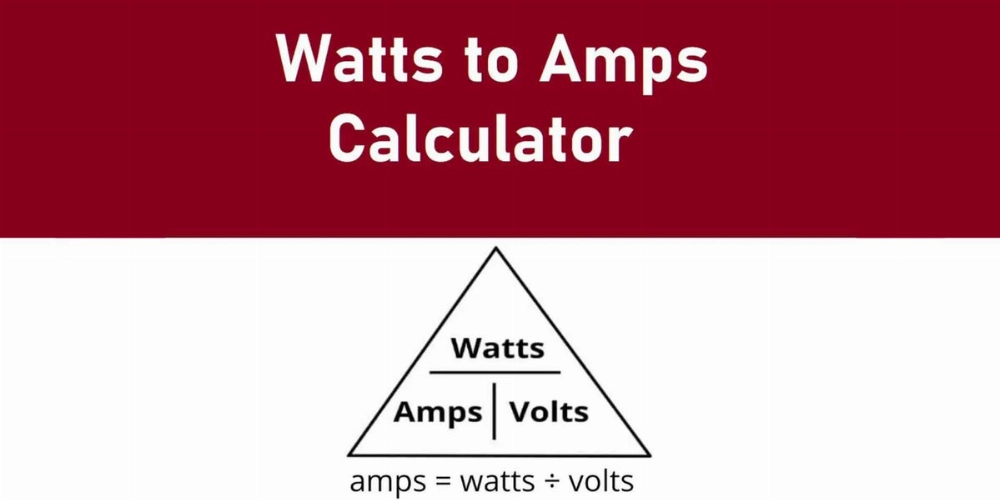Understanding the Conversion of Watts to Amps
Understanding how to convert watts to amps is crucial for anyone working with electrical systems. Whether you’re installing a new appliance, designing a circuit, or just trying to understand how much electricity is being used in your home, understanding the relationship between these two units of measurement can help you make informed decisions. This guide will introduce you to the basics of watts and amps, the necessary conversion formulas, common mistakes, and practical applications of these conversions.
Part I: What are Watts and Amps?
Watts (W) and amps (A) are basic concepts in electricity.
- Watts are used to measure electricity and indicate the amount of energy used or produced over a period of time. For example, a light bulb rated at 60 watts consumes 60 watts of electricity when it is turned on.
- Amperes (amp) are used to measure current. You can think of amps as the amount of water flowing through a pipe: the larger the pipe (the higher the amperage), the more water (or current) will flow through it.
Understanding the relationship between watts and amps is critical to determining the power consumption of devices and the current they draw from the electrical system.
Ampere hours vs. watt hours: what’s the difference?
While it’s important to understand the difference between watts and amps, there’s also a common comparison between ampere-hours and watt-hours, which each represent a different type of energy measurement in an electrical system. We’ll explore this in more detail later.
Part 2: Why Convert Watts to Amps?
There are several important reasons to convert watts to amps:
- Safety: Knowing the amperage used by your equipment helps prevent overloading of circuits, which can lead to dangerous situations such as electrical fires.
- Compatibility: Ensuring that the amperage matches the capacity of the circuit helps to avoid damage to the device and the electrical system.
- Efficiency: Understanding these conversions can help optimize energy use, thereby reducing electricity bills and carbon emissions.
Part 3: The Basic Formula for Converting Watts to Amps
To convert watts and amps, you can use a simple formula derived from Watt’s Law. The basic formula is:
Part 6: Converting Watts to Amps in a Three-Phase System
The process of converting watts to amperes in a three-phase system is slightly different than in a single-phase system. For line-to-line voltage, the formula is:
I (A) = P (W) / (V_L-L (V) × PF × √3)
The formula for line-to-line voltage is:
I (A) = P (W) / (V_L-N (V) × PF × 3)
These formulas take into account additional factors in three-phase power distribution and are essential for anyone working with industrial electrical systems.
Part 7: Common Mistakes When Converting Watts to Amps
While converting watts to amps may seem simple, a few common mistakes can lead to miscalculations:
- Ignoring Voltage Levels: Be sure to check whether you are using AC or DC power and use the appropriate voltage values for accurate calculations.
- Ignoring power factor: In an AC system, power factor is critical to avoiding major calculation errors.
- Confusing Units: Always use uniform units, and remember that 1 kW equals 1000 W. Confusing units can lead to incorrect calculations.
Part 8: Practical Applications of Watt to Amp Conversion
Understanding how to convert watts to amps has many practical applications:
- Electrical planning: Knowing the required amperage can help prevent overloads and improve safety when designing circuits or selecting circuit breakers.
- Appliance Management: Homeowners can better manage their electricity usage by knowing the current draw of their appliances.
- Renewable energy systems: accurate calculations are critical for solar panel installation and battery systems to ensure optimal performance and safety.
Part 9: Frequently Asked Questions
How do I determine if the circuit can withstand additional equipment?
To check if a circuit can handle additional equipment, calculate the total current of all the equipment and compare it to the circuit’s amp rating (usually 15 or 20 amps).
What happens if the circuit’s amp rating is exceeded?
Exceeding the circuit’s amp rating may trigger a circuit breaker to trip or a fuse to blow as a safety measure. This can also cause wires to overheat and start a fire.
Can I use any voltage rating in my calculations?
No! Please use the correct voltage rating for your specific application. Using the wrong voltage will result in inaccurate current calculations.
What tools are needed to measure watts and amps?
A multimeter or clamp meter can be used to accurately measure watts and amps in a variety of electrical systems.
Do I need to consider the effect of temperature on current?
Yes! High temperatures increase the resistance of wires and affect current. Temperature must be considered when planning an electrical installation.
Related tags: ufine, electrical engineering Contributors
KHZH Guide: Portable Battery Chargers – Use, Safety and Maintenance
What is a portable battery charger?
Portable battery chargers ensure that your equipment stays powered up wherever you are. This guide will give you an easy-to-understand introduction to portable battery chargers, their uses, materials and how they work.
How to choose the best battery pack for your needs: capacity, performance and more
Choosing the right battery pack is critical to reliability and efficiency. This guide explores the essential factors of capacity, safety and performance to help you make the best choice.








